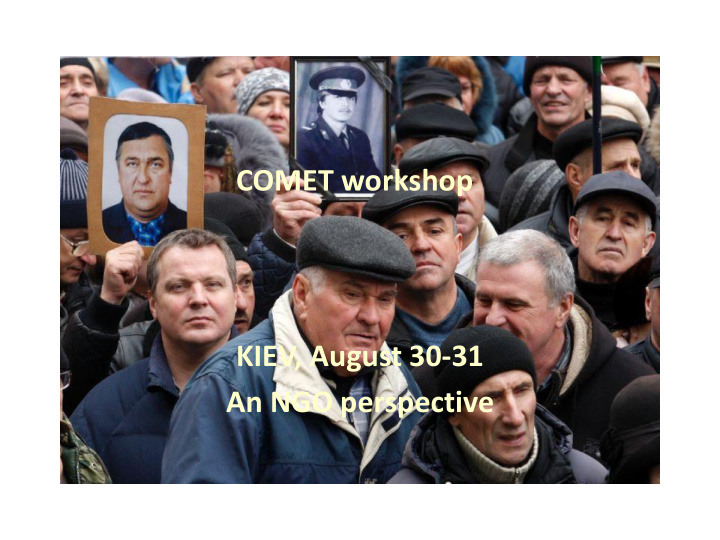



COMET workshop COMET workshop KIEV, August 30-31 An NGO perspective
UK Radiation Protection Infrastructure
Chernobyl health impacts : Rise of cancer, not only thyroid, but also leukemia, breast cancer and other cancers Rise of non-cancer diseases (exceeds the cancer cases) - blood system, stroke and heart attack, thyroid – endocrinological diseases, (Basedow, Hashimoto, Diabetes), lens diseases Genetic effects : congenital malformations, rise in perinatal mortality, rise of stillbirth
Chernobyl-related cancers : Clean-up workers : increase in cancer by 20 % (Okeanov,2004) increase in acute and of chronic lymphatic leukemia (Zablotska et al, 2012), increase in thyroid cancer (Kesmiene et al, 2012) Gomel region, Belarus: increase in cancer rate by 55.9 % Belarus overall: 40% (Okeanov et al. 2004) Increase in breast cancer in contaminated areas Gomel + Mogilov (Belarus) and Chernigov, Kiev, Zhytomir (Ukraine), (Pukkala et al. 2006) Increase in leukaemia (children) in contaminated areas of Ukraine: Significant if the contamination is higher than 10 mSv (Noshenko, 2010) and Belarus (A. Körblein 2013) for babies in the first year after Chernobyl Increase in number of brain tumours for children under 6 years (Ukraine) 5,8 fold (Orlov, Sharevsky, 2002)
Recommendations • Estimation of health effects on humans and wildlife can only be as accurate as the baseline data • Need to have set up CHERF (and/or extend RERF in Japan) and be ready for the next accident • Funding is needed for scientific effort to document range of biological consequences • Need to appreciate “ inconvenient truths ”
Acknowledgements • Greenpeace - reports • IPPNW reports and conversations (Angelika Claussen) • Low Level Radiation and Health Conferences (1st workshop on Radioactivity and wildlife led by Dr Janet Rowe, Bristol University, 1991) and Beyond Nuclear events held in London and Manchester March 2016 to mark the anniversaries of the nuclear accidents, 30th at Chernobyl and 5th at Fukushima • Prof. Tim Mousseau , South Carolina University • TORCH Report 2006 and 2016, Dr Ian Fairlie • And particular thanks to Professor Nick Beresford for the invitation and support, NERC-CEH
Chernobyl Fukushima • Reinstate monitoring • Systematic health check programmes ups for all • Involve affected • Clean up workers population • All evacuees • Close off highly • Population staying in contaminated areas and contaminated zones clearly mark them • Impacts on marine life • Decontaminate areas of radioactivity around near highly populated Japan and US (Buessler) areas Need summary of effects on wildlife as currently known and understood
Recommend
More recommend